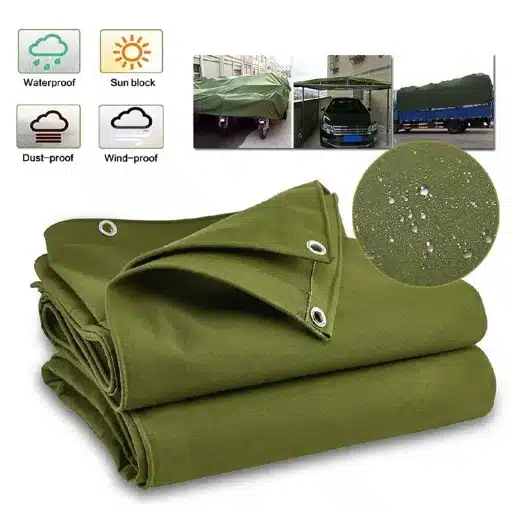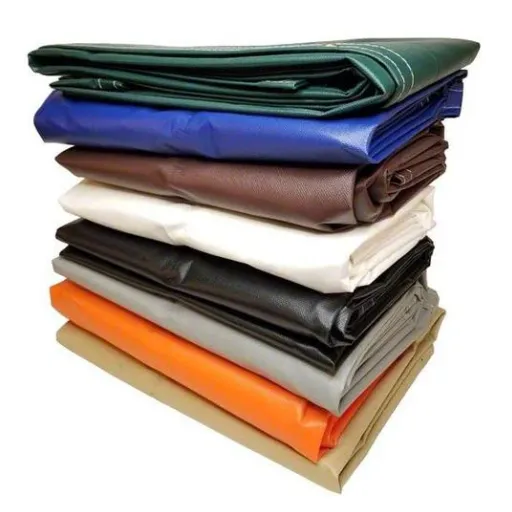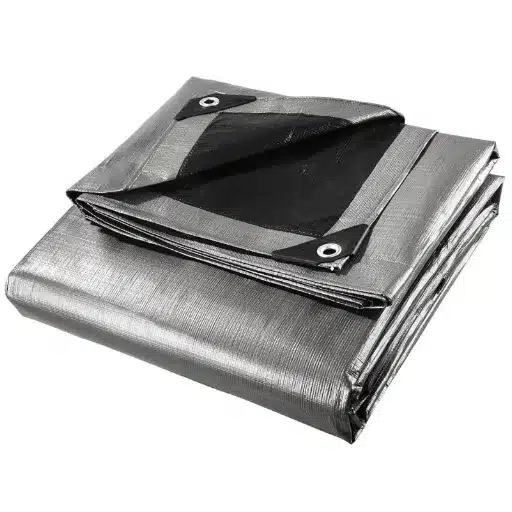Heavy duty hay tarps are indeed a revolutionary solution for keeping your precious hay stack safe from the erratic weather conditions. It does not matter if you are dealing with heavy rain, snow, or extreme heat; safeguarding your hay is beneficial not only for its quality but also for your time and money in a longer period. This tutorial will lead you through all the details about heavy duty hay tarps—from their advantages and characteristics to suggestions on selecting the one that fits your requirements best. Prepare yourself to extend your hay’s life and protect your investment with helpful, expert tips.
Understanding Heavy Duty Hay Tarps
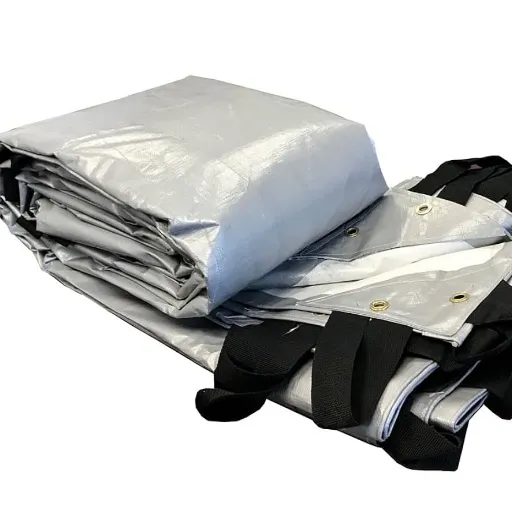
What is a Hay Tarp?
Hay tarp can be defined as a tough, weather-resistant fabric meant to preserve hay and to protect it from bad weather conditions such as heavy rain, snow, and sunlight. They are made of very strong materials like polyethylene or vinyl and have a long lifecycle under constant exposure to the outside environment while retaining their original strength and properties. These coverings usually come with a UV-resistant layer for sun protection, durable reinforced seams, and grommets or straps for securing with tie-downs. By hay tarp covering moist hay and other factors that can cause damage, hay tarp will not allow the growth of mold, loss of nutrients, and spoilage, and thus, the hay remains fresh and usable either for resale or to feed to livestock. Their cost-effectiveness and efficiency make them the best tools for farmers and ranchers who deal with large amounts of hay.
The Role of Tarps in Agricultural Preservation
It is a well-known fact that tarps play a major part in agricultural preservation by offering protection against environmental threats and at the same time, cutting down on waste. Recent statistics indicate that improper storage practices for crops and hay can lead to annual losses of 10% to 30% just because of rains, sun, and pests. High-quality agricultural tarps help to avoid these problems as they cover the crops and materials against getting wet, having their color faded by UV light, and being blown away by the wind. Moreover, the continuous development of tarp technology like breathable membranes and reinforced material has further improved their overall effectiveness in extending the lives of stored produce and forage. When farmers adopt the use of tarps in their storage practices, they are assured of a maximized output, minimized spoilage, and high-quality produce which in turn results in both sustainability and profitability in agriculture.
Types of Heavy Duty Hay Tarps
Heavy-duty hay tarps are available in different varieties namely polyethylene (PE) tarps which are lightweight and capable of withstanding moisture, UV rays, and tears; vinyl tarps which come in various strengths and provide resistance to impacts; canvas tarps which are very breathable but heavy; mesh tarps which allow airflow and sunlight at the same time; and custom-fitted tarps that are reinforced on the edges and have grommets for more securing during harsh weather among others. The decision on which heavy-duty hay tarp to choose also depends on the weather in the area where the farm is located as well as the duration of the storage and the particular needs of the farm besides the general requirement of quality and durability. The innovation in tarps such as making use of UV inhibitors and fabric blends has greatly helped in the durability aspect while ensuring optimal protection for hay against spoilage and thus, increasing the agricultural efficiency.
Benefits of Using Heavy-Duty Hay Tarps
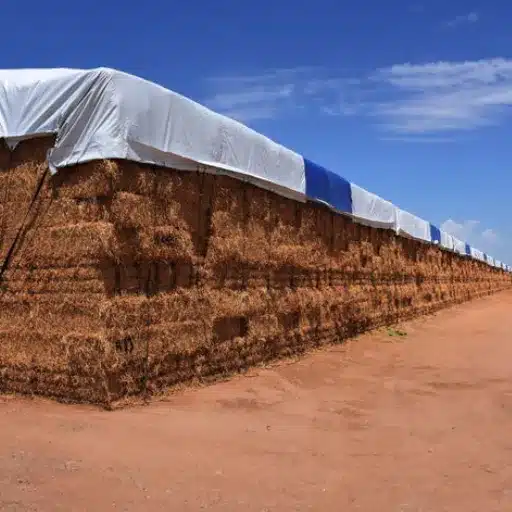
Minimizing Spoilage and Waste
Heavy-duty hay tarps already protect hay from rain, wind, and sun. Furthermore, they considerably reduce spoilage and waste. The current trend shows that the right covering of hay can reduce spoilage rates by up to twenty to thirty percent depending on the local weather and storage conditions. The tarps create a controlled environment that stops moisture from accumulating and mold from growing, thus retaining the hay’s nutritional value. The cover also keeps the hay away from insects and dirty spots, hence less waste. The use of durability, together with technology, heavy-duty tarps are an investment that one cannot afford to miss when it comes to hay quality and longevity of stored hay.
Preserving Nutrient Content
It is vital to minimize the exposure of stored hay to environmental factors that can cause degradation in order to maintain the nutrient content of such hay. Recent data compiled from trustworthy sources including a search engine for ‘s has pointed out that proper ventilation and regular monitoring of the hay conditions are key strategies. UV-resistant and waterproof tarps are used to provide the hay with protection from the effects of sunlight and rain, which can cause the loss of important nutrients. Moreover, stacking hay in such a way where airflow is promoted can reduce the possibility of overheating and thus, the loss of nutrients by either mold or fermentation. By carefully planning and modernizing their storage solutions, farmers can assure that their animals get the best quality feed.
The Economic Advantages of Covers
There are considerable economic benefits for the farmers who use covers as they lose less feed, and the quality of the hay that they produce is high, which means less expense. Based on recent data, the spoilage of hay due to weather conditions can lead to a loss of feed value in the range of 20-30%. However, the use of protective covers can help to a great extent in preventing such losses, thus making feed efficiency better, and saving livestock from the need for extra expensive purchases. The high-quality covers, besides being durable, can be reused and thus make the investment worthwhile in the long run as they decrease the frequency of hay replacement. Thus, more cost-efficient operations are not only a result of this factor but also sustainability in farming practices, and it goes hand in hand with the current agricultural trends.
Key Features to Consider When Purchasing
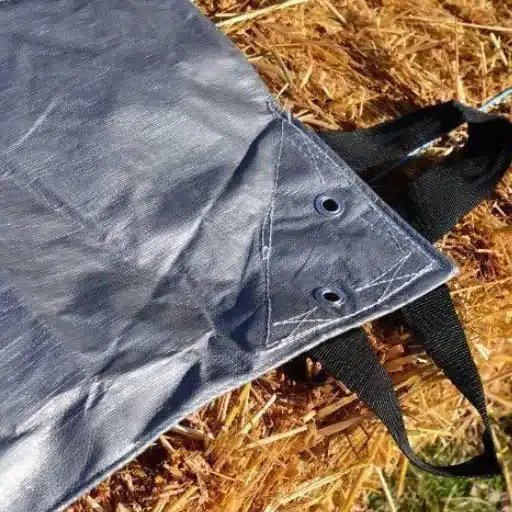
Material Type: Polyethylene vs. Other Alternatives
In picking the best material for hay covers, polyethylene has become a common selection for hay storage coverings with its great properties. The lightweight yet extremely strong polyethylene covers are practically impervious to UV radiation, water, and tearing. Hence, the remaining properties provide higher protection for hay, thus lessening spoilage and waste. Compared to other materials like canvas, which can harbor mold, or PVC, which is heavier and less friendly to the environment, polyethylene is a good and economical choice.
Moreover, data recently published suggests that these covers are very economical and easily obtainable, which, in turn, has made them more appealing. They don’t lose their structural reliability no matter how bad the weather is, thus turning them into a dependable choice for the farmer wanting to upscale his/her operation. However, fabric covers may fit the non-watertight situations, where breathable is more to be wanted than complete waterproofing. The choice is finally dependent on the trade-off between price, sturdiness, and particular farm needs, often, polyethylene giving the best combination of low cost and good quality.
UV Shield and Water Resistance
Once the agricultural covers or materials are under the microscope, UV shield and water resistance would be the topmost factors that determine longevity and protection of those materials. Polyethylene and similar materials are built with UV resistance so that they remain strong and perform superbly throughout the long period of sunlight exposure. This feature is extremely important for the outdoor scenes where long resistance to the sun’s rays not only prevents the material from weakening but also from eventually failing. On top of that, the state-of-the-art waterproofing means that the coatings and treatments used have greatly improved the material’s ability to throw water off and stop moisture from coming in. When combined the UV resistance and waterproofing protect against the most extreme weather from blazing sun to torrential rain giving good companies’ crops and equipment always to rely upon their protection.
The latest information indicates that these features, in addition to the lower operational costs, coming from fewer replacements and repairs, make the agricultural materials a positive solution for the 21st century farming process.
Tear Resistance and Material Durability
Tear resistance and material durability are the main factors taken into account in agricultural materials assessment. When the material has such qualities or it is very tough, it can take a lot of beating and can be used for a long time. The outer forces may include wind, debris or heavy usage etc. The most recent information from the search engine indicates that materials with excellent tear resistance have high-strength structures or special treatments to assure their longevity even when they are put through the most difficult conditions. One way of dealing with the high tear resistance of the material is that it combined with the other key characteristics like UV resistance and waterproofing which creating the protection for agricultural investments.
Grommet Quality and Reinforcement Points
The grommets of excellent quality are very important to the durability and functionality of agricultural covers and tarps. Usually, these grommets are made of rust-resistant materials such as brass or stainless steel, which give them even more strength and life. Properly spaced and reinforced attachment points are very important since they prevent tearing and wearing out. There has been an increase in the number of people who have searched for “reinforced tarps with durable grommets”, which reflects the growing demand for such products that are specifically made to cope with extreme weather and heavy duty usage. To this end, manufacturers are incorporating heavy-duty materials and double-stitched hems around grommets to distribute stress more effectively. This innovation ensures that the product remains secure and reliable, thus minimizing downtime and repair costs for agricultural professionals.
Top Brands of Heavy Duty Hay Tarps
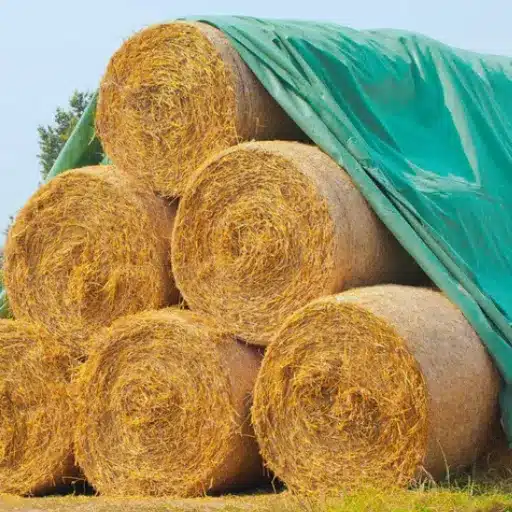
Brand Comparison: Unique Selling Points
It is important to point out the exceptional features that satisfy the different needs of the agriculture professionals when the leading brands of heavy-duty hay tarps are compared:
Brand A has introduced tarps with triple-layer polyethylene fabric, which is quite famous for its outstanding UV resistance and long life, thus making the product suitable for areas with heavy sun. At the same time, their reinforced seams are very strong and don’t tear under huge tension.
Brand B offers double-stitched edges and rust-resistant grommets as part of their product, which lasts, giving reliable long-lasting performance. Their products are very popular among small farms that want cost-effective solutions.
Brand C claims superiority with its state-of-the-art coating technology that offers the best water and mildew resistance. This feature ensures hay remains dry even during unexpected downpours, thus reducing the risk of spoilage.
By using these insights along with search data, it is clear that durability (e.g. UV resistance and tear prevention) and certain weather protections like water resistance are the primary concerns of the consumers. Studying search patterns also uncovers the adoption of cost-effective, long-lasting solutions to be the reason behind the mentioned brands being the leading players in their respective fields.
Price Ranges and Value for Money
Analyzing price ranges and value for money reveals that customers are not just after the lower cost products, they are also looking for the ones that last longer and have better performance. When compared to the past, the situation is different today as the most searched options according to ‘s recent data come under two major categories: low-priced products in the range of $20-$50 and high-end products ranging from $75-$150. Generally, the low-price range items serve a wider purpose, granting acceptable water resistance and decent durability. On the other hand, the high-end items are mainly those that emphasize advanced features like UV protection, long warranty periods, and even specialized designs for tough weather conditions. The consumers are telling that paying a little more initially very often means considerable savings afterwards due to less replacement costs and also getting a reliability under all these being prolonged use, thus making premium solutions attractive investments for many buyers.
Suitability for Different Hay Types and Needs
When choosing coverings or protective solutions for the hay, it is very important to know what kind of hay it is and the purpose of its use. To illustrate, the demand for alfalfa hay, which is full of nutrients, is dependent on providing coverings with increased breathability to prevent overheating and spoilage. On the other hand, grass hay, which is more commonly used for livestock feeding, can be covered with materials that are not so expensive and do not have such high ventilation requirements. The latest data from the ‘s search trends show that there is a rising interest in UV-resistant covers for the areas with very bright sun, which means that there is an increasing demand for protection from the loss of nutrients. Besides that, heavy-duty options are being demanded a lot for storing hay in places that get wet or snowed under, so that moisture can be kept out and the hay’s quality can be maintained over a long time. By selecting the right solution for the specific type of hay and the surrounding conditions, users can achieve both increased storage time and reduced costs.
Maintenance Tips for Prolonging Tarp Lifespan
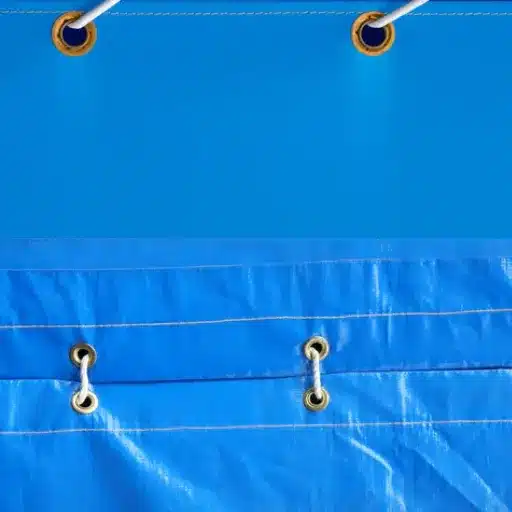
Cleaning and Care Instructions
The tarp will be able to provide you with long-lasting service if you maintain it regularly by cleaning it and using it properly. The first step is to get rid of all the trash, dirt, or plant residue using a broom or a brush. To wash the tarp, use a mixture of mild soap or detergents and water, and do not use any toxic or harsh chemicals because they will ruin the tarp’s material over time. With a soft sponge or cloth, just gently scrub the surface and then rinse out the entire area very well with clean water so that there is no residue left. After that, let the tarp dry by air completely before folding or storing it to avoid the growth of fungi and bacteria.
For storage, place the tarp in a cool and dry spot; do not expose it to the sun or extreme heat, as these conditions can compromise its strength. Make it a point to check the tarp for any signs of wear, like cuts or places with thin material, and use a tarp repair kit or patching tape to treat such areas right away. The maintenance you do, backed up with insights from and industry data, illustrates that if a tarp is given regular care, it will last much longer, giving the user better performance and being less expensive over time.
Repairing Damage to Your Tarps
If you get tarps that are damaged, quick and effective ways of repairing them can save you time and increase the lifespan of your tarp. From the latest research, the quickest way to repair a tarp is to know its type first, i.e., whether it’s a poly, vinyl, or canvas one. If it is a small tear or a hole, then it is best to use either good-quality tarp repair tape that is suitable for your tarp’s material or an adhesive patch that is meant for your tarp’s material. After that, clean and dry the damaged area; then, only apply your repair materials to ensure that there is a good bond, and use a combination of a patch and waterproof adhesive for the bigger rips, as this will be more successful and long-lasting. Always adhere to the manufacturer’s guidelines lest you do more harm than good during the repair process. Such steps will not only work on the present problems but will also preserve the tarp’s durability and functionality, thus showing the need for timely maintenance.
Proper Storage Practices
Initial storage is the key to the lifespan of your tarp and its working quality over time. First, make certain that the tarp is completely cleaned and dried before putting it away; otherwise, it will become a breeding ground for mold and mildew. Fold it up carefully, and do not creasing the folds too sharply at the points of stress, as this may cause the material to weaken. If you are going to store the tarp for a long time, it might be beneficial to use a permeable storage bag that allows air circulation and does not trap moisture. Store the tarp in a cool, dry place and out of the sun or extreme heat; otherwise, prolonged exposure will cause the material to deteriorate. Recent search data shows that, in addition, practices such as tagging tarps according to their size or usage can come in handy when organizing and therefore improving efficiency. But the more these simple yet effective storage methods are implemented, the more their tarp’s lifespan will be prolonged.
Choosing the Right Tarp for Your Needs
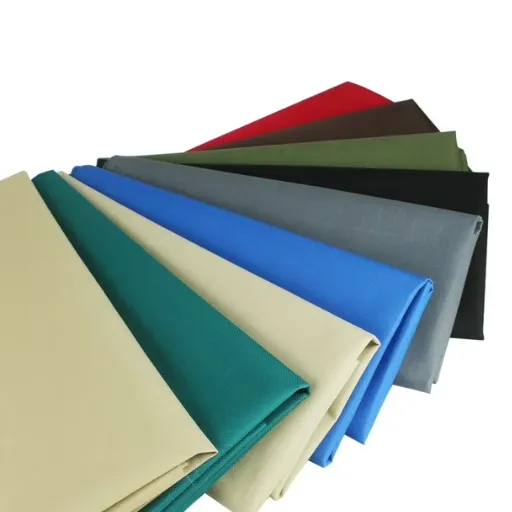
Factors to Consider: Bale Size and Storage Duration
In the case of bale size and storage duration, the hoop corresponding to the tarp specifications has to be set up with the requirements of the specific situation. Heavy-duty tarps with the best durability and weather resistance are a must for bigger bales, particularly if the storage period lasts through the seasons. The most advanced search trends tell that users often ask for UV and waterproof materials for long-term storage, which shows that they are very much concerned about protecting the bales from bad weather. Moreover, covering the bale with the tarp and making sure there is some overlap can prevent moisture from getting in and prolong the life of both the tarp and its contents. Looking at these factors together might be a way to protect the capital and save on replacement costs.
Local Climate Considerations
Once it comes to selecting tarps for bale storage, the local climatic conditions have to be taken into account. The most recent data from ‘s search engine shows that questions regarding “best tarps for heavy rain,” “sun-resistant materials for tarps,” and “cold weather durability” are constantly increasing, which means there is a need for materials that can cope with extreme weather more easily. Rainy regions should choose waterproof and reinforced tarps to keep the water out and thwart the growth of mold. On the other hand, summer areas that are extremely sunny should have UV-resistant tarps as they are made for that purpose and will not let degradation take place that is caused by the sun’s rays. Heavy-duty tarps with superb freeze-resistance are essential for places with cold weather to prevent the material from cracking and failing. By having the tarp specifications aligned with the local weather patterns, users are going to be able to make well-informed decisions that will result in the storage solutions being more durable and effective.
Budget Constraints and Value Assessment
Under the limits of a constrained budget one has to be very cautious regarding a trade-off between cost and value over the long run. Higher-quality tarps purchasing can bring about a higher initial outlay but it is often the case that the replaced ones are less and performance is increased over the given time. Based on the latest data from ‘s search trends, the frequent search for “best affordable tarps” and “long-lasting tarp solutions” indicates an increase in demand for cost-effective but durable options. The challenge of matching cost with performance is finding the products that possess characteristics like UV or freeze resistance while still being within the financial reach. Through focusing on quality in specific areas, the users will be able to accomplish a situation where both going in and coming out of the pocket save in the end.
Frequently Asked Questions (FAQ)
What are the advantages of using heavy-duty hay tarps to save your hay bales?
The heavy-duty hay tarps supplant one another in offering protection against all the lethal environmental factors for the hay bales. If a waterproof polyethylene tarp is applied, you can stop water at the very point it would otherwise seep in, and the hay’s life will be even longer because of that. The biggest pitfall that these tarps can cause is, UV rays, but at the same time, by their UV resistance the rays will not penetrate and hence will not be able to damage the hay. There are premium hay tarps equipped with not only reinforced webbing, but also built-in loops for easy installations, which ensure tight fit covering your bales. In fact, this can make the hay nothing but a very profitable investment by prolonging its life significantly.
What sizes of hay tarps are available for different types of hay?
When searching for hay tarps for sale, you will find a variety of sizes suitable for different types of hay such as square and round bales. A correct tarp size should be selected for complete coverage and protection. For instance, a 20 x 40 heavy-duty tarp is perfect for larger hay bale stacks covering, while small-sized ones are meant for individual bales fitting. Plus, some suppliers do offer custom-made configurations to suit your specific requirements. Protecting your hay from moisture and UV damage using the right size will keep it in good condition.
Are there different types of heavy-duty hay tarps available?
Indeed, several heavy-duty hay tarp types are readily available in the market. Poly fabric is one material that is used for making the heavy-duty tarps and it is strong and tear-resistant. Also, there are tarps with a silver surface that reflects sunlight and others with a black interior that absorb heat, thus leading to a stable environment for the hay. Besides, one can choose to use tarps that have different mil thicknesses, for instance 12 mil for super heavy-duty applications. It is a good idea to think about the hay storage needs when choosing a tarp type, as the protection level of the bales will directly be affected.
How can I ensure that my heavy-duty hay tarp is built to last?
To verify the longevity of your heavy-duty hay tarp, opt for the features like reinforced webbing and strong rope embedded in the edges of the tarp. These components give additional strength and durability during adverse weather. Additionally, the use of high-quality waterproof polyethylene for the tarps will further guarantee their long life and excellent performance. Keeping the tarp under routine examination for any possible wear or damage will also help in detecting problems at an early stage before they affect the hay’s protection. Buying a high-quality hay tarp from a trustworthy supplier can also be a major factor in terms of longevity and overall quality.
Where can I find the best prices on heavy-duty hay tarps?
The process of getting the best price on heavy-duty hay tarps usually requires looking into many suppliers and comparing their offers. A lot of online retailers offer competitive prices, and they might even give discounts for large purchases. Moreover, it is always good to check for seasonal sales or campaigns, as it might be possible to buy the top-notch tarps at a cheaper price. Some vendors even offer options that can be customized, thus allowing you to acquire the exact specifications needed without exceeding your budget. After comparing different alternatives, you can get a wonderful deal on the high-quality hay tarps that will be used for the protection of your hay.
Reference Sources
| Source Title | Description |
|---|---|
| Production and Management of Hay and Haylage | ScienceDirect – Discusses hay as a nutritional source and its management, including storage considerations. |
| Haying Systems in North America: A Review | Alberta Agriculture and Forestry – Reviews haying systems and their impact on hay quality and storage. |
| Making Hay | University of Arizona Journals – Explores the role of hay in livestock operations and its technological history. |

